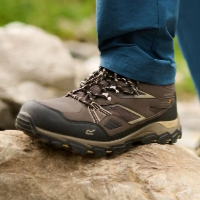
Leather VS Synthetic Walking Boots
On the hunt for some new outdoor footwear? You'll have a decision to make. Should you stick with the traditional approach and go for a pair of battle-hardened leather boots, or should you throw tradition to the wind and go for a synthetic pair instead, in favour of more technical-looking designs and a mindful approach to how materials are sourced.
Leather VS Synthetic Footwear: Is Synthetic The Way To Go?
Synthetic leather (otherwise known as faux leather) is now an increasingly common substitution for real leather when designing walking boots. Leather has been the tradition for a long time and are perceived to be higher quality compared to their faux counterpart, however synthetic leather shoes have some benefits of their own:
- They're lighter than leather walking boots.
- They can be vegan friendly (depending on things such as non animal based glue).
- They don't take as long to break in.
- Styling options are more versatile.
- Superior breathability.
Faux Leather VS Real Leather
Faux leather is a man-made material, it's not real leather. Typically, this is made from Polyurethane, which is often advertised as PU leather. Faux leather is designed to mimic the looks of real leather whilst retaining some of the core benefits you'd expect from the real deal.
The main difference between faux leather and real leather is the durability. Real leather boots have been tried and tested over decades, so they're widely known to be tougher and more resistant to abrasions. That's not to say that faux leather isn't durable at all, merely less-so than real leather.
ComfortAnother thing to consider is the initial comfort of the shoe. Real leather walking boots will take a while before they become comfortable due to the breaking in process, whereas synthetic (and even fabric walking shoes) will be comfortable right from the get-go, as they don't need to shape to your feet as much as leather.
Synthetic walking boots are also notably lighter than real leather, so they're much less taxing on your feet to wear over long distances. There's also the added benefit of extra breathability too, which helps moisture built up over the course of a long walk escape your shoe, which is a key factor in preventing blisters when hiking.

Is Faux Leather Waterproof?
On it's own, faux leather isn't waterproof, but neither is real leather. They are, however, somewhat water resistant. Leather and faux leather walking boots advertised as waterproof are treated with a durable water repellent finish (DWR) to add water repelling properties to the footwear to prevent water from seeping through. Here at Regatta, our waterproof selection of walking boots are protected by our very own Isotex treatment which guarantees waterproof protection for up to three years.









